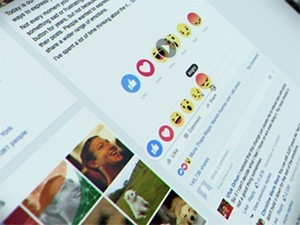
Facebookers all over the world are using the social network's new "reactions" feature to express sentiment about their least favourite politicians.
Five new "reaction" buttons last week took their place alongside Facebook's traditional "like" button, allowing users to express more specific responses with a single click.
These responses included love, laughter, surprise, sadness and anger - the latter proving a popular choice on politicians' pages, specifically on their profile pictures.
Widely-hated US republican party frontrunner Donald Trump, for example, has over 1 700 angry reactions on his most recent profile picture at the time of writing, compared with only 127 "love" reactions. Other reactions on the picture include 57 indicating laughter, and 31 indicating sadness.
At 44 frowning emojis, UK prime minister David Cameron's profile picture also amasses more angry reactions than any other besides the generic "like".
Yet the obvious landmark case for this new trend is 'Chief Executive of Hong Kong' Leung Chun-ying, or CY Leung as he is known on Facebook, whose most recent profile picture has over 177 000 angry reactions and over 1 200 sad reactions, compared with just over 5 600 likes.
At the time of writing, this trend does not yet seem to have broken into SA's political sphere, as none of the most prominent South African politicians who run their own Facebook pages have reactions besides "likes" on their profile pictures.
The trend is demonstrative of how Facebook's new reactions allow users to aggregate and collectively demonstrate negative sentiment in ways that were only possible with positive sentiment (in the form of likes) until last week.
Before reactions arrived, users could only voice negative sentiment on fan pages via comments, which were only prominently displayed if they were the most recent or the most liked, and, unlike reactions, could be disabled if the page administrator so desired.
Share